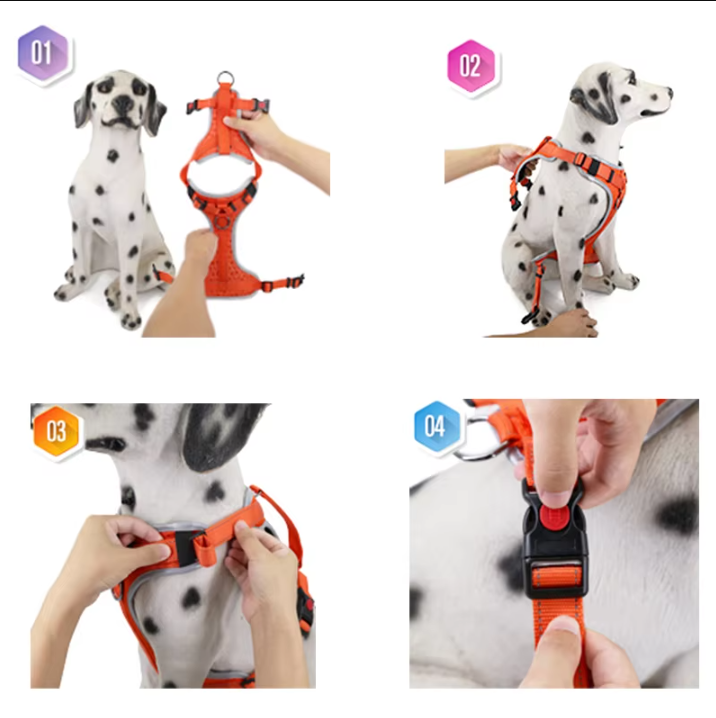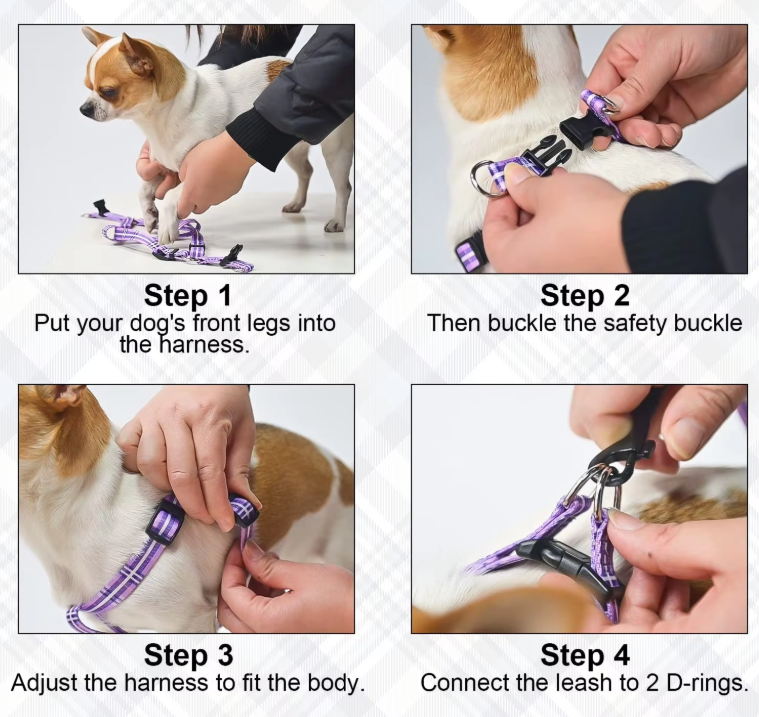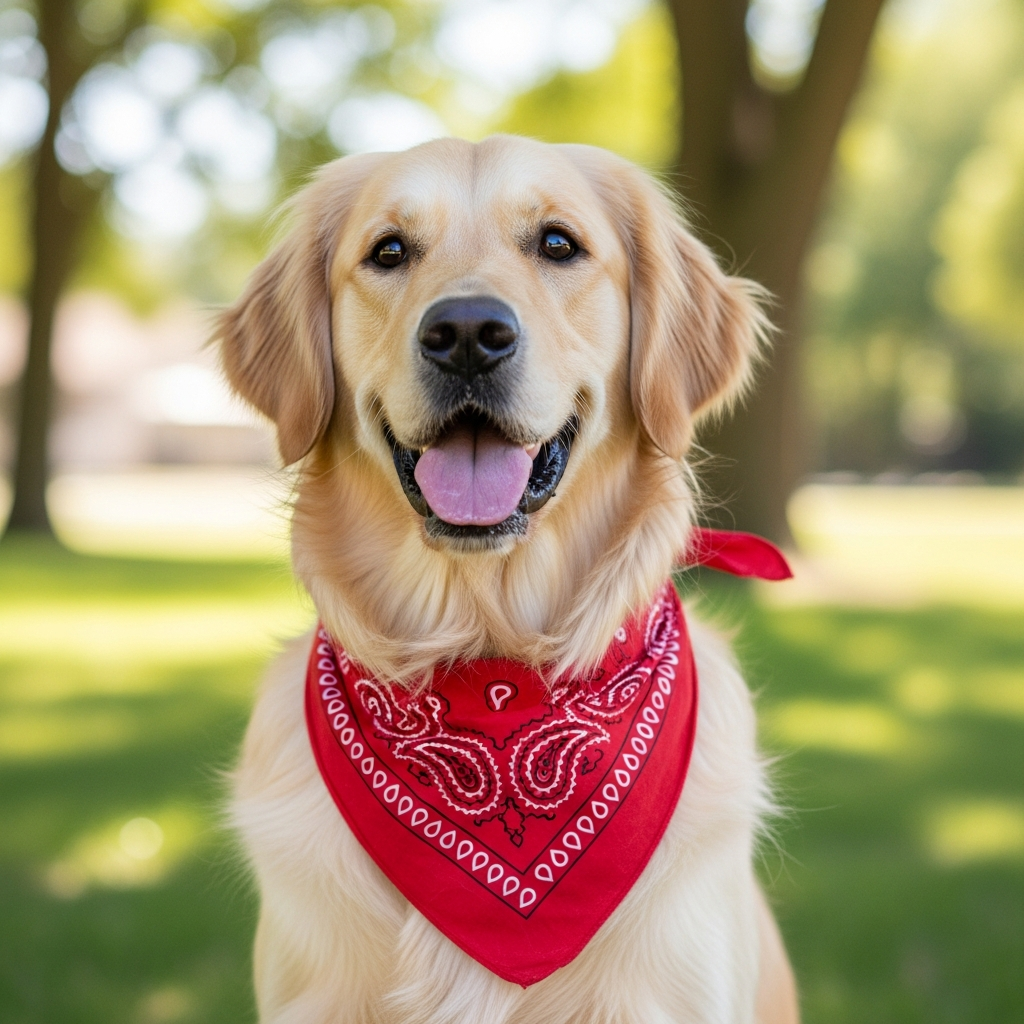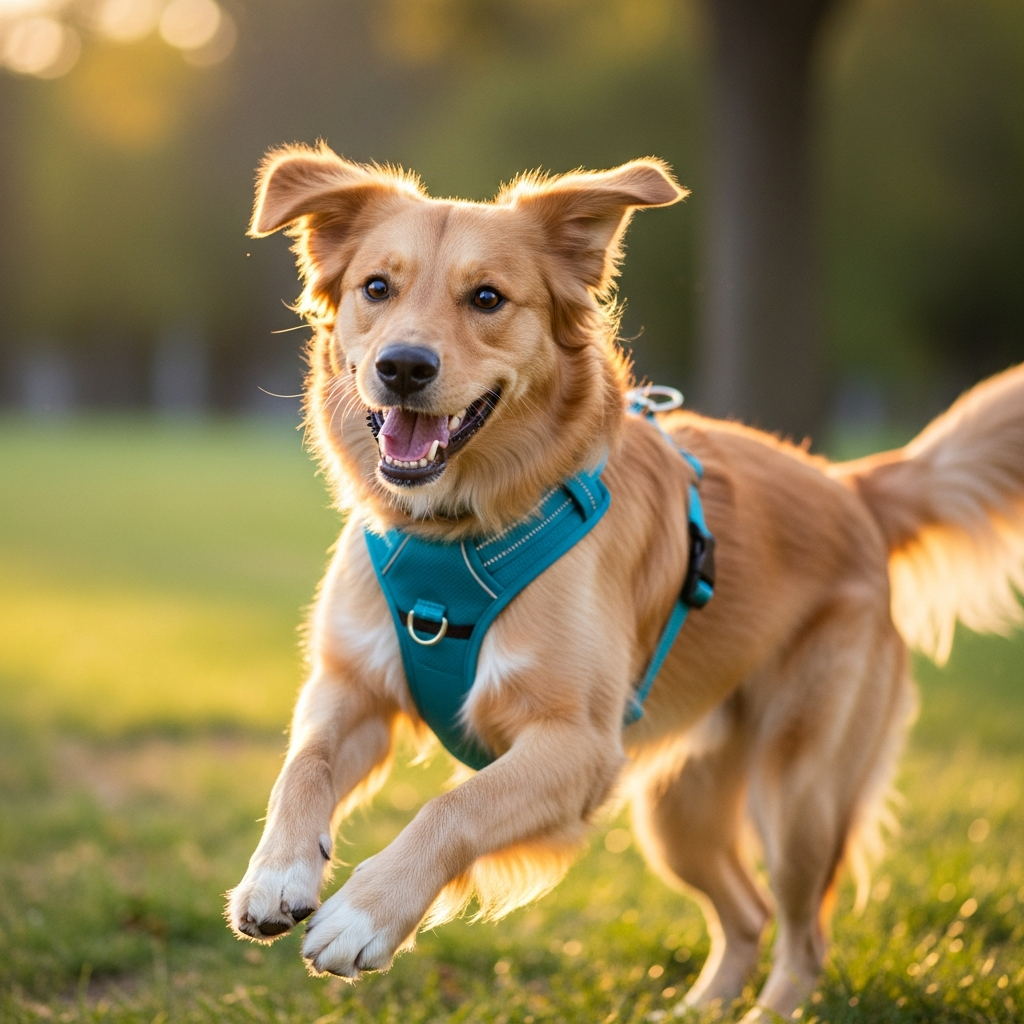Struggling to properly put on your dog’s harness can cause discomfort or confusion for your pet. This improper use can lead to frustration for both of you and even behavioral issues. Luckily, we have an easy guide to help!
Properly fitting a dog harness is crucial for comfort, control, and safety. Learn the best method to ensure it fits your dog properly and avoid common mistakes.
Why Properly Putting on a Dog Harness Is Important?
Many dog owners struggle with finding the right way to put on a harness. If not done correctly, your dog might feel restricted, leading to discomfort or even behavioral problems. A poorly fitted harness can cause chafing or affect your dog’s movements. The right harness ensures comfort, better control during walks, and prevents injury. By following the correct procedure, you can improve your dog’s experience, making walks more enjoyable for both of you.
Choosing the Right Harness for Your Dog
Before we dive into the steps for putting on the harness, it’s important to choose the right one. Dog harnesses come in many shapes and sizes. Selecting the correct one based on your dog's breed, size, and walking habits will make a big difference in its effectiveness. Ensure that the harness is well-suited to your dog’s body type for optimal comfort.
▲Step 1: Preparing the Harness and Your Dog
Before you begin, ensure that the harness is adjusted to fit your dog’s size. A harness that is too loose or too tight can cause discomfort and lead to issues down the road. Start by having your dog sit or stand still. This will make the process smoother and less stressful for both of you. Also, ensure there are no tangles in the harness straps before putting it on.
▲Step 2: Position the Harness on Your Dog’s Body
Begin by gently draping the harness over your dog’s back. Most harnesses have a chest strap that needs to be positioned over the dog’s chest. It’s important to position the harness so that it doesn't restrict your dog’s breathing or movement. If it’s a step-in harness, make sure the straps are aligned properly with your dog’s legs.
▲Step 3: Fasten the Straps Securely
Once the harness is in place, start fastening the straps. Begin with the chest strap and then secure the back strap. You should be able to fit two fingers between the harness and your dog's skin. This ensures it is snug, but not too tight. If your dog seems uncomfortable, readjust the straps for a better fit.
▲Step 4: Adjust the Fit for Comfort
After fastening the harness, make sure to check if it fits comfortably around your dog’s chest, shoulders, and neck. The harness should allow your dog to move freely without restriction. Also, be mindful of any areas where the harness might cause rubbing. Adjust the straps until the harness fits securely but comfortably.
▲Step 5: Double-Check the Harness Before Walking
Before you head out for a walk, take a moment to check the harness again. Ensure it’s not too loose or tight, and confirm that it stays in place as your dog moves around. If your dog seems to be pulling or trying to wriggle out, readjust the harness or choose a different type.

Dog Harness Wearing Steps


Benefits of Using a Dog Harness
Using a harness instead of a collar can benefit both you and your dog in various ways. For starters, harnesses provide better control over your dog’s movements, making them an excellent choice for walks. They also distribute the pressure evenly across the dog’s body, which can be gentler than using a collar, especially for dogs prone to respiratory issues. Harnesses can prevent pulling and reduce strain on the neck, making them safer for dogs that tend to tug on the leash.
Types of Harnesses Available
There are several types of dog harnesses available, each designed for specific purposes. The most common types include:
- Step-in Harness: Easy to put on, with your dog stepping into the harness and having straps pulled over.
- Over-the-Head Harness: Designed for dogs that dislike having something put over their heads. It slides over their head and is adjusted for a snug fit.
- No-Pull Harness: These harnesses are designed to discourage pulling by redirecting the dog’s movement and offering more control.
- Vest Harness: These are softer and more comfortable, often used for dogs that have sensitive skin or require extra cushioning.
Each type has its own advantages, so selecting the best one for your dog’s needs is essential.
Can a Dog Harness Prevent Pulling?
A well-designed no-pull harness can help curb pulling behavior. These harnesses work by redistributing the pulling force to less sensitive parts of the body, usually the chest or back, which reduces strain on the neck. No-pull harnesses often have a front attachment point that gently steers the dog back toward you when they pull, making walks easier to manage.
When Should You Not Use a Harness?
While a harness is a fantastic tool for many situations, there are times when it may not be appropriate. If you’re training a dog to walk on a leash or control pulling, some trainers prefer using a collar or specific training tools. In certain cases, a poorly fitted harness could also cause more harm than good, so it’s important to adjust and monitor your dog’s behavior.
Conclusion
Putting on a dog harness is a simple process once you get the hang of it. By following these steps and choosing the right harness, you can ensure your dog is comfortable, secure, and ready for your next adventure together!
Cindy Long is the Sales Manager of Raysunpets and a pet lover with over 12 years of experience in exporting pet products. She specializes in providing customized dog chest carriers, leashes and pet accessory solutions for the European and American markets, always focusing on the real needs of customers and pets, and is committed to creating high-quality, practical and comfortable products that allow fur kids to live happier lives.


